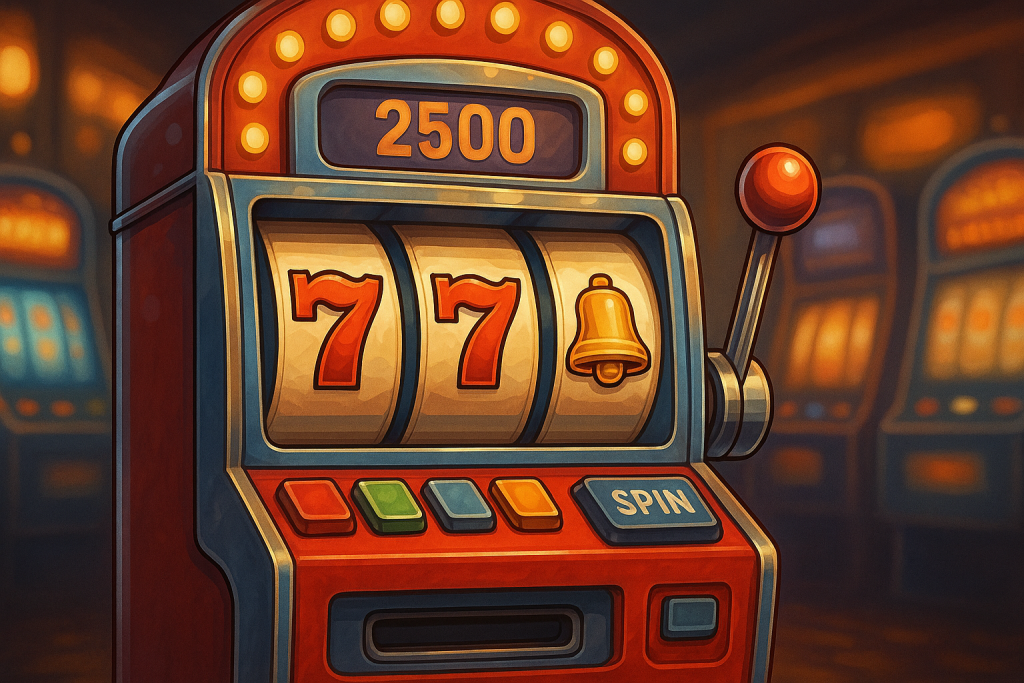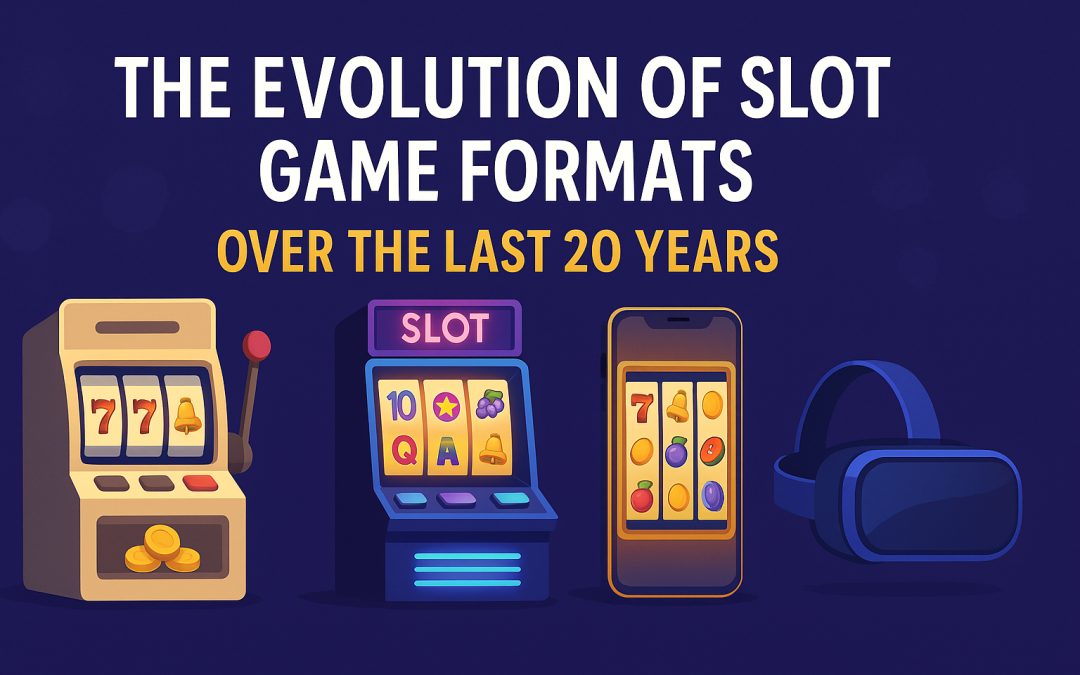Slot machines have always had a knack for reinventing themselves. What started as a clunky lever-pulled contraption in the late 1800s has somehow managed to thrive in an age of cloud gaming and VR headsets. And if you’ve been around casinos or dabbled in online play over the last couple of decades, you’ve probably noticed how quickly the landscape shifted. It’s not just about lining up cherries anymore—it’s about stories, cinematic intros, and sometimes even virtual adventures that feel like a video game.
The Early 2000s: The Rise of Digital Slot Games
Transition from Mechanical to Digital Systems
Walk into a casino around 2003, and you’d already see fewer mechanical levers and more glowing screens. The hum of spinning gears was being replaced by pixelated fish swimming across WMS cabinets (Reel ’Em In comes to mind for many players). I remember a friend’s dad complaining that “these machines don’t feel real anymore”—he missed the tug of the lever. But for most, the promise of new features and themes outweighed nostalgia.
Digital systems opened the floodgates. Suddenly you could have five reels instead of three, a dozen paylines instead of one, and bonus games that whisked you away to another screen. The slot floor began looking less like a room of metal boxes and more like a carnival of mini-worlds.
The Impact of RNG and Early Online Casinos
The magic trick here was the Random Number Generator, or RNG. Without it, the whole digital shift might have collapsed under suspicion. RNGs made sure outcomes weren’t predictable. You couldn’t lean in and “time” the spin anymore, which some old-timers swore they used to do.
Meanwhile, online casinos were just dipping their toes into the mainstream. Microgaming was pushing titles like Cash Splash, and people were genuinely amazed you could gamble on a dial-up connection. The graphics looked like clip art compared to today’s standards, but back then, it felt futuristic—playing slots in your pajamas was a revelation.
The Mid-2000s: Slot Games Go Mobile
Introduction of Mobile Slot Platforms
If the early 2000s were about digitizing, the mid-2000s were about shrinking things down to fit in your pocket. The first attempts at mobile slots were, let’s be honest, pretty clunky. I tried one on a Nokia flip phone in 2006 and couldn’t even tell if I was winning—tiny fruits on a grayscale screen don’t exactly scream excitement.
But by the time smartphones took over, the game changed. The iPhone’s touchscreen meant you could tap to spin instead of awkwardly pressing arrow keys. Suddenly, slot games didn’t feel like awkward demos; they felt like apps worth keeping.
How Smartphones Revolutionized Slot Access
Once you could spin reels while waiting for your coffee order, slots broke free from the casino floor. They became a casual pastime. I knew people who’d sneak in a few spins on the bus home. Developers caught on fast, designing for “quick hits” instead of marathon sessions. That’s how something like Slotomania became a phenomenon—less about winning money, more about having a slot-like distraction in your pocket.
The 2010s: The Era of Innovation
Video Slots and Multi-Payline Formats

By the 2010s, the slot scene had exploded into creative chaos. Paylines multiplied like rabbits. A single spin might light up thirty or more lines, and half the time you weren’t sure why you’d won—but hey, the credits went up, and that’s what mattered.
Software developers also started thinking bigger with themes. NetEnt dropped Gonzo’s Quest in 2011, and players suddenly found themselves following a cartoon conquistador through collapsing stone blocks. It wasn’t just about spinning reels anymore; it was about being part of a quirky little narrative.
The Arrival of Megaways Mechanics
If there was one thing that completely rewired the slot industry, it was Megaways. Big Time Gaming came up with the idea in 2016, and it felt like someone flipped the table on the old playbook. One spin could give you 117,649 possible ways to win. That’s not hyperbole—that’s the actual math.
When I first tried a Megaways slot, it felt overwhelming at first, but the unpredictability kept me hooked. No two spins looked the same, and that unpredictability was intoxicating. Developers scrambled to license it, and within a few years, Megaways was everywhere.
Enhanced Graphics, Themes, and Storytelling
Slots started looking more like PlayStation games than casino cabinets. Cinematic intros, layered soundtracks, even story arcs that unfolded over multiple sessions—it all became standard fare. Playtech’s superhero series had players practically collecting characters like trading cards. Suddenly, you weren’t just gambling; you were “playing through” a theme.
The 2020s: Immersion and Interactivity
Virtual and Augmented Reality Slots
Now we’re in the 2020s, and the industry is flirting with immersion like never before. VR slots let you walk around a digital casino, reach out to grab a lever, and feel like you’re actually in the room. I tried a VR demo once, and while the headset was clunky and my living room looked ridiculous with me flailing around, it did feel strangely real.
AR experiments are popping up too. Imagine pointing your phone at your desk and seeing a tiny slot cabinet spinning away. It’s gimmicky, sure, but it shows just how far the idea of a “slot” can stretch.
Cross-Platform Play and Cloud Integration
These days, a player can start a session on their laptop, continue on their phone during lunch, and finish on a smart TV at night. Cloud gaming made this seamless. The old frustration of waiting for downloads or updates is mostly gone. You just tap, and the reels are ready.
Live Casino Slot Hybrids
Another fun twist? Live casino slots. It’s basically a mash-up between slots and a game show, with a real host spinning oversized reels while you play along. Some folks love the social aspect—it feels less solitary, more like you’re cheering along with a crowd. Others think it’s silly. Either way, it shows that slots have become entertainment in the broadest sense.
Design and Technology Trends Shaping Slot Development
HTML5 and Game Engine Advancements
Behind the curtains, the real unsung hero has been HTML5. Once Flash died, developers finally had the flexibility to design games that ran smoothly on every device. No more “this game only works on PC but not on your phone.” The technology meant less waiting and more polish, and players definitely noticed.
User Experience and Gamification in Slots
And then came gamification. Achievements, leaderboards, daily challenges—suddenly, slots felt like mobile RPGs. I once got hooked on a slot that let you “travel across a map” with each spin unlocking a new region. It had nothing to do with payouts, but I kept spinning just to see the next animation. That’s the power of layering game design over gambling mechanics.
The Future of Slot Game Formats
AI and Personalized Slot Experiences
Looking forward, personalization is the big frontier. Developers are already testing AI systems that tweak volatility or themes based on your playstyle. If you like high-risk, high-reward, your slot could subtly lean toward that. Prefer steady small wins? The algorithm adjusts. It’s a little eerie, but it might keep players more engaged than ever.
Blockchain and Decentralized iGaming Markets
Blockchain has also made waves. Some decentralized casinos let you verify outcomes on the blockchain, so there’s no debate about fairness. Crypto casinos are still niche, but the idea of provably fair slots is catching attention. Who knows? In 10 years, decentralized jackpots could be as common as progressive ones are now.
Predicting the Next 20 Years of Slot Innovation
If the last twenty years have taught us anything, it’s that slots never stay still. We could see formats that blend esports and slots, where tournaments are streamed to massive audiences. Or maybe fully immersive AR casinos where your living room transforms into Vegas with a headset. Honestly, the next Liberty Bell moment could be around the corner, and none of us will see it coming until the reels start spinning.
Why the Evolution Matters
Over two decades, slot games morphed from simple fruit machines to sprawling digital worlds. Every big leap—from RNG to Megaways, from mobile apps to VR demos—has changed not only how we play but what we expect.
For players, it means variety. For developers, it’s a never-ending race to innovate before the competition does. And for casinos, it’s proof that the slot machine isn’t just surviving—it’s constantly evolving, sometimes in weird, unexpected ways.
Because at the end of the day, whether you’re pulling a lever in Reno, tapping a screen on the subway, or donning a VR headset in your living room, one truth remains: the reels will always keep spinning.


